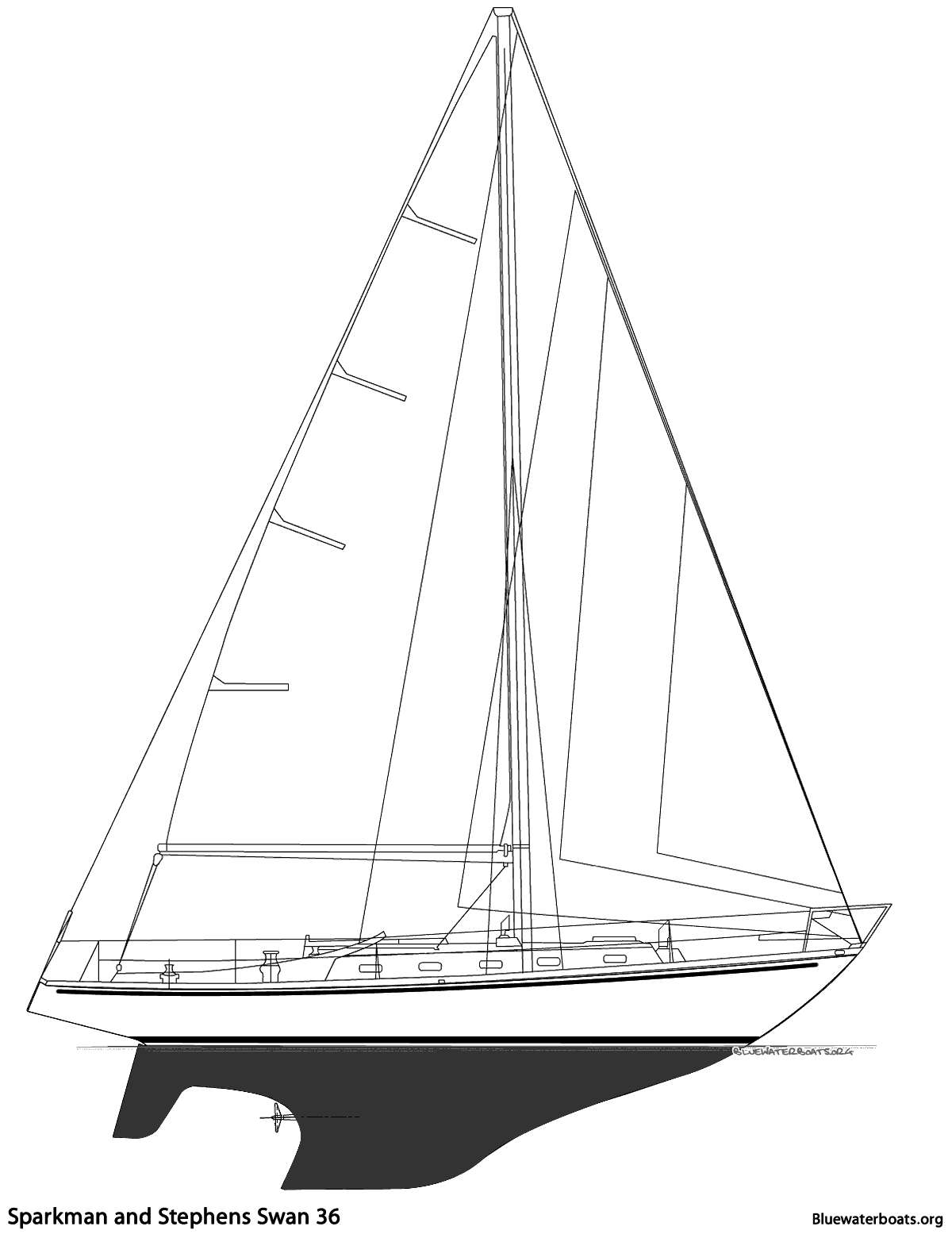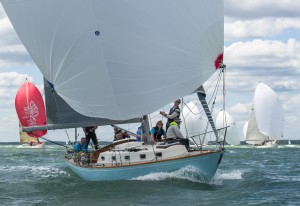“The firstborn of a highly rated family and the perfect boat to use year-round in any weather… a pure pleasure to sail”
Nardi’s Nods – By Federico Nardi of Cantiere Navale Dell Argentario. Translated by James Robinson Taylor
Thanks to Pekka Koskenkila’s youthful enthusiasm, the first Swan was created in 1966. His fascinating and enjoyable online article (sparkmanstephens.blogspot.it/2012/04/design-1710-cybele-and-swan-36.html) tells the story of his first meeting with Rod Stephens and the birth of the Nautor yard at Jacobstadt in Finland. The boat was 36ft long with a 9ft 8in beam, a 6ft draught, and a displacement of 14,300lb with 7,936lb of ballast.
We are at the dawn of fibreglass production and her lines are those of wooden yachts from that period. The interior was designed to the marvellous shape of the hull, so the amount of living space is not comparable to today’s yachts, but the layout was drawn by the famous Swedish naval architect Olle Enderlain who proposed an elegant open-space interior, including a settee for six. The dining table can be lowered to become a large bed, so seven can sleep aboard.
The first Swan 36 was delivered to the English sailor Dave Johnson, who successfully campaigned her in many races in the British Isles. Between 1967 and 1971, 90 Swan 36s were built. This was a transition project for the S&S design studio, during the innovative period where the rudder was first separated from the keel and supported by a skeg. She still has pronounced overhangs, the bilge is deep, and the whole structure is incredibly robust.
A boat in the price range from €30-40,000 is also a good investment (so to speak, when dealing with boats!). The 36 is the firstborn of a highly rated family and is the perfect boat to use year-round in any weather. At 55.5% the ballast to displacement ratio is definitely in favour of the lead ballast and this, together with her low freeboard and modest beam, make her a pure pleasure to sail. Those sailors who are fortunate enough to appreciate beauty will be fully satisfied. Also note the varnished wooden parts that complete the superstructure and make the Swan 36 a work of art.
Below decks the settees are to port, with the galley to starboard. There are also two quarter berths with the chart table to port. The head is walk-through between the main cabin and the forepeak, with its two V-berths. The engine is well placed, down low and almost centerline with the propellor just aft of the keel. The fuel and water tanks are positioned with the same logic and noticeably increase her righting moment. The aluminum mast is properly sized and through-deck, visible below in front of the forward bulkhead.
There are some Swan 36s on the market, but you must be careful as there can be problems. The deck often suffers from delamination, allowing water into the balsa core; the galvanized metal mast foot may have suffered after 35 years with the mast on its back. It is therefore a good idea to involve a surveyor. ★
SWAN 36
LOA 36ft (11m)
Beam 9ft 8in (2.95m)
Draught 6ft (1.8m)
Sail Area 229 sq ft (21.3m2)
Displacement 7,000kgs





